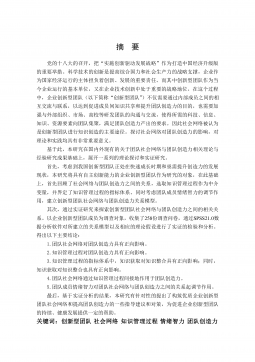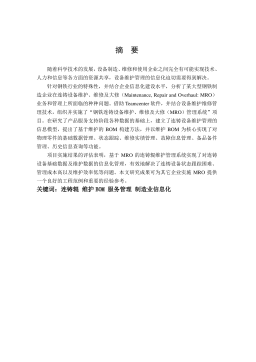真空制冰系统性能研究及改进
摘要本论文综合分析了冰浆在日常生产生活当中的重要作用和真空冰浆制备系统目前的发展现状,对比分析了该系统与其他非真空制冷方式的冰浆制备系统各自的优缺点。针对真空冰浆制备系统运行真空度较高的问题进行分析,提出了中介物质的概念,要求中介物质具有易溶于水、溶解潜热大、在相同压力下沸点低于水等特点。本论文提出利用在水中加入中介物质的方法来降低真空冰浆制备系统对真空度的要求。本文利用物质的化学势平衡理论与溶液相图相结合,从理论上验证了在真空冰浆制备系统中加入中介物质具有降低系统对真空度要求的作用。为了验证中介物质对真空冰浆制备系统运行真空度的影响,选取符合上述物性要求的物质氨为代表性的中介物质,并介绍了真...
相关推荐
-
USST_Arts_112480743自动生产线的同步维修模型及案例分析VIP免费

 2025-01-09 14
2025-01-09 14 -
USST_Arts_112480745基于供需网特征理念的企业间关系状态研究VIP免费

 2025-01-09 15
2025-01-09 15 -
USST_Arts_112480756 我国城镇化与能源消费结构间关系的研VIP免费

 2025-01-09 20
2025-01-09 20 -
USST_Arts_112490763 企业创新型团队社会网络、知识管理过程及团队创造力关系研究VIP免费

 2025-01-09 13
2025-01-09 13 -
USST_Arts_112490769创新团队执行力影响因素分析VIP免费

 2025-01-09 16
2025-01-09 16 -
USST_Arts_112070649基于团队自反性的科技型企业TMT特征对企业绩效的影响研究VIP免费

 2025-01-09 21
2025-01-09 21 -
TR公司工业机器人市场发展战略研究VIP免费

 2025-01-09 24
2025-01-09 24 -
二氧化碳套管式气冷器的研究VIP免费

 2025-01-09 17
2025-01-09 17 -
非共沸混合物在微通道水平单管内流动沸腾特性VIP免费

 2025-01-09 82
2025-01-09 82 -
基于MRO的连铸辊维护管理系统研究VIP免费

 2025-01-09 11
2025-01-09 11
相关内容
-

USST_Arts_112070649基于团队自反性的科技型企业TMT特征对企业绩效的影响研究
分类:高等教育资料
时间:2025-01-09
标签:无
格式:PDF
价格:15 积分
-

TR公司工业机器人市场发展战略研究
分类:高等教育资料
时间:2025-01-09
标签:无
格式:PDF
价格:15 积分
-

二氧化碳套管式气冷器的研究
分类:高等教育资料
时间:2025-01-09
标签:无
格式:PDF
价格:15 积分
-

非共沸混合物在微通道水平单管内流动沸腾特性
分类:高等教育资料
时间:2025-01-09
标签:无
格式:PDF
价格:15 积分
-

基于MRO的连铸辊维护管理系统研究
分类:高等教育资料
时间:2025-01-09
标签:无
格式:PDF
价格:15 积分






